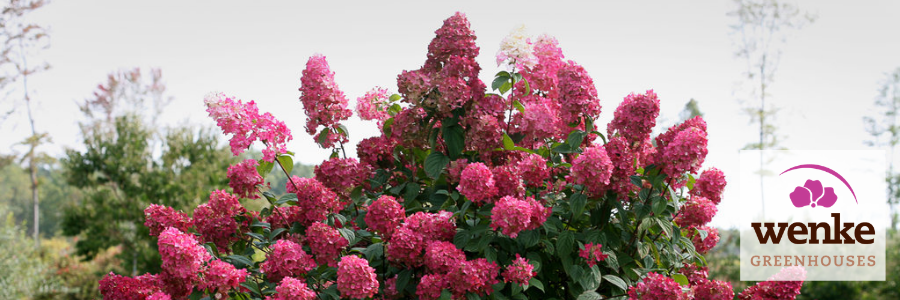Many customers ask why their hydrangeas aren’t blooming. The primary reasons hydrangeas don’t bloom are incorrect pruning, bud damage due to winter and/or early spring weather, location and too much fertilizer.
Let’s start with pruning…
Hydrangea varieties can be of the type that blooms on old wood, new wood or both. Old wood is the current year’s growth and new wood is next year’s (spring) growth.
- Say you purchased a Nikko Blue Hydrangea this year. Nikko’s produce blooms in the fall for next year. So this fall your Nikko is producing blooms that will flower next spring.
- So you wouldn’t want to prune your Nikko Blue Hydrangea to the ground this fall when you are cutting back your perennials. You would be essentially cutting off your hydrangea blooms for the following spring by pruning the Nikko Blue Hydrangea this fall.
- Endless Summer is a hydrangea variety that blooms on old and new wood with the idea being the plant will set blooms this fall to blossom not only next spring but will continue to produce blooms next spring to extend the blossoms into next summer.
- Again, you would not want to prune your Endless Summer Hydrangea in the fall because you would be cutting off some of next spring’s blooms.
The plant tag on the hydrangea will tell you if the plant blooms on old wood, new wood or both. It is always best to wait and prune your hydrangeas in the spring. Once the plant starts growing you will see stems that do not have any leaves and are brittle when bent. These stems should be pruned near the base of the plant since they are dead and will not produce any blooms.
Weather is another factor….
Weather most likely is the second reason as to why your hydrangeas aren’t blooming. Hydrangea buds are very sensitive to cold. So if you have an old wood hydrangea it is a good idea to wrap your hydrangea for the winter. Remember, old wood hydrangeas set blooms in the fall for the following spring. So if the buds produced in the fall are frozen in the winter, you will not have blossoms in the spring.
Ordinary burlap can be used for wrapping. After the first hard frost and when leaves have fallen off the hydrangea wrap burlap around the plant and fill it with leaves or mulch. This provides insulation for the plant and protects the buds so they will overwinter into next spring. Never use plastic to wrap your hydrangeas. Plastic unlike burlap doesn’t breathe so when warmer winter days arrive, the plant cannot breathe and can warm to such high temperatures the plant cooks inside the plastic and dies.
Late spring killing frosts are the other most common weather related reason as to why hydrangeas do not bloom. Both this year and last year, we had very cold temperatures in April following warm spring days. Hydrangeas need to be covered with an old beach towel or sheet when spring temperatures drop to freezing. The temperature drop will kill the buds thus no flowers.
Location…
Most hydrangeas need at least 3-4 hours of light to produce blooms. Early morning light is excellent, mid day light is fine if it is dappled light versus beating sun and afternoon sun is usually too hot. However, check the plant label. Newer hydrangea varieties are being developed to tolerate greater length of exposure to sun and intensity of sunlight. Remember, a hydrangea in full sun will need much more watering than one in dappled light.
Fertilizer…
Hydrangeas should not be fed with high nitrogen fertilizer. The first number on the fertilizer ratio is nitrogen. (The ratio represents N-P-K) Some nitrogen (N) is needed for healthy leaves and overall good growth however a ratio of 8-16-6 or some comparable combination with a higher middle or phosphorus (P) number is desired. Phosphorus promotes root and shoot growth which enhances the development of blooms.
Potash (K) the last number of the ration is for plant hardiness and is the lower ratio of the three elements. Hydrangeas are acid loving plants and fertilizers formulated for acid loving plants can be used to fertilize hydrangeas. Fertilizing twice a year, once in early spring and again in mid-summer is enough for hydrangeas. Always be sure the soil is moist before you apply a fertilizer to prevent root burn.


